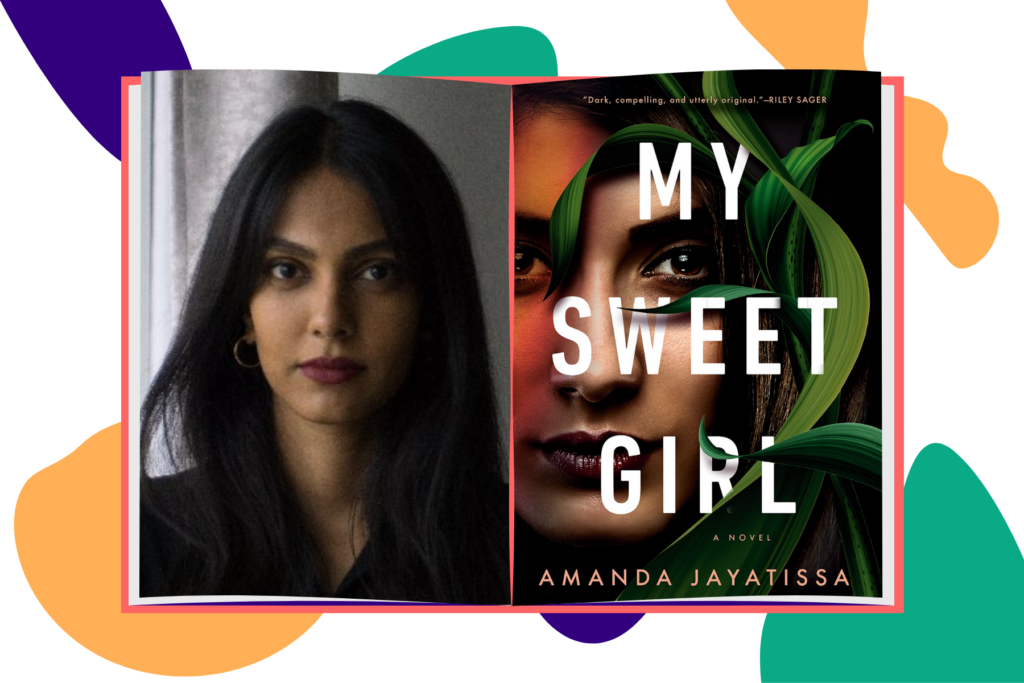
Amanda Jayatissa’s debut thriller “My Sweet Girl” is the book I’ve been waiting for. Not only does it contain untranslated Sinhalese words and phrases, references to niche-Sri Lankan experiences and places, but it features one of my favourite ghosts, Mohini. (Is it strange to have a favourite ghost? Yes? Good.) Paloma, the protagonist of the story, grew up in Ratmalana, Sri Lanka, at Little Girl’s Miracle Home, an orphanage run by Perera Sir. Paloma’s greatest wish was to be adopted, which, to her surprise comes true when the wealthy Mr. and Mrs. Evans from America visits the orphanage. Mr. and Mrs. Evans are the stereotypical rich, white charity type. The sort who think that it is “important that they ‘moved like the natives’ of the lands they visited in order to ‘be respectful’” all while being Diamond members in the Hilton Honours program.
As such, the first-person narrative toggles between Paloma as an adult in San Francisco and Paloma’s childhood self at the orphanage where she had many friends, the best of whom was Lihini. Lihini and Paloma did everything together, but especially bonded over their love of books and reading:
That’s what we did, Lihini and I. We shared the same books and spent every afternoon we could reading. And when we couldn’t read, we talked about what we read.
It was this act of exchanging books between two best friends that led to Paloma’s adoption, as Mrs. Evan’s saw Paloma reading a copy of Lihini’s favourite book, “Wuthering Heights,” which was coincidentally Mrs. Evans’ favourite book as well.
[Read Related: Editor’s Picks: 4 Thrilling and Chilling Books to Spice up Your Halloween]
18 years later, Paloma Evans is now a borderline alcoholic millennial who is cut off from her parents’ funds and is straining to get her freelance graphic design business up and running. Paloma’s character is angry, unfiltered, and like many of us, lives in duality—never fitting in here nor there. Not American enough for here, not Sri Lankan enough for there. Dear reader, you and I both would not be here in this space if this identity crisis was not one of our evergreen personality traits, too, right?
The story begins with an angry Paloma who is trying her best to stay calm as she deals with a bank teller who is trying her best to keep Paloma satisfied, but obviously completely failing at it. Paloma is in a panic to get her funds released because she needs to pay off her Indian roommate, Arun, who found and read a letter containing Paloma’s deepest, darkest secret—a secret that has followed Paloma from Sri Lanka to San Francisco.
After failing to get access to her funds, Paloma decides to have a drink that leads to one more and then another, despite the strict guidelines from her therapist, Nina, to not mix alcohol with the medication Paloma is on. Paloma, now drunk and angrier than ever, heads home to give a piece of her mind to Arun—only to find him face down, in a sticky pool of blood; dead. Paloma is stunned but quickly gathers herself and heads to the bathroom to find a weapon in case the attacker was still in the apartment. And that’s when she sees her, my favourite ghost from Sri Lanka—Mohini. Mohini is in San Francisco. 14,388 km of distance is apparently no match for a childhood ghost to come back to haunt you when you are at your worst.
[Read Related: Book Review: ‘The Archer at Dawn’ by Swati Teerdhala]
Paloma runs out of the apartment and stumbles into the stairwell when she feels a pair of cold hands wrapping around her neck, and she passes out. She wakes up the next day and, while still in the stairwell, hesitantly calls the police who come to investigate the crime scene. To their distaste and Paloma’s utter shock, they find no blood on the walls and no dead body on the table. Both Paloma and I, as the reader, immediately have a similar trajectory of thought—was the death a hallucination? Was Mohini behind it?
Thus begins a mysterious, thrilling, and sinister tale that will keep you up for hours wanting to know more about Paloma’s childhood as equally as her present-day situation. “My Sweet Girl” is a tale of two (very different) cities and their (very different) people, interwoven with incredibly relatable themes surrounding identity and belonging.
You can purchase a copy of “My Sweet Girl” from Penguin Random House and follow Amanda Jayatissa’s work on Twitter!




